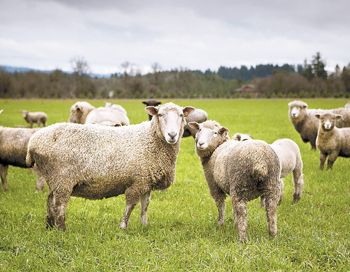How Do You Do, Fondue?

By Christine Hyatt, Cheese Chick
Cold, blustery winter days and the romantic theme of the month collide, just begging for a focus on fondue. The melty, communal cheese frenzy is the perfect antidote to wintry weather, bringing people together to celebrate great food and good times.
Fondue is the national dish of Switzerland, and in it, I see the perfect reflection of self-sufficiency and tradition, a direct outgrowth of the Alpine terroir.
During exceptionally long winters, when travel was treacherous, communities relied on food produced and preserved in summer months to sustain them. Lucky for the Alpineers, their cheeses are incredibly flavorful, versatile and packed with nutrition.
Extra large wheels of smooth-melting Gruyère, Emmental and Appenzeller are never in short supply and, with the addition of a bit of wine, garlic and crusty bread, a hearty and satisfying meal is never far from reach, even during the wickedest winter weather.
The hard, aged cheeses are a specialty of the region and developed out of necessity in the mountainous terrain. During spring and summer, herds of cattle would move from villages in the valley, making their way slowly up into higher terrain to graze on lush pastures, preserving spaces closer in for other agriculture.
During the journey, shepherds crafted extra large wheels of Alpine-style cheeses in traditional stone huts, which also served as shelters for the shepherds. Wheels of Gruyère would weigh between 70 and 75 pounds, and gargantuan Swiss Emmental exceeded 200 pounds.
In this case, size had its advantages. Large wheels were made for long aging and transport down the mountain at the end of the season. Legend has it that the large format was also a way to foil the taxman who would wait for shepherds to return each year to assess the number of wheels of cheese produced. Larger wheels equal fewer wheels equal less taxes.
Even today, the ritual of transhumance, the movement of livestock to verdant mountain pastures, continues. Cheeses made from their lush spring and summer milk are highly sought after for their exceptional flavor.
Swiss cheesemakers use traditional large copper vats, which are ideal for evenly transmitting heat throughout the milk. These cheese vats are ubiquitous throughout the region and produce one or two large cheeses per batch.
If any curd remains after large wheels are crafted, it is made into a smaller format, semi-firm cheese like Morbier — shepherds readily eat this type of cheese because the curd ripens more quickly.
Cheeses are carefully aged for a minimum of five months, and the most exceptional are aged 12 months or more. Today, cheeses are collected and aged in special temperature- and humidity-controlled aging caves to the peak of perfection. Wheels will be clearly designated a certain age and quality.
Just Fondue It
Fondue was promoted as the national dish of Switzerland in the 1930s by the Swiss Cheese Union to encourage cheese consumption. Fondue and its unique cooking pot, known as a caquelon, were extremely popular in the U.S. in the ’60s, when fondue parties were the rage. The recent renaissance in all things cheese created demand for updated fondue pots, which are widely available.
When you make fondue, I suggest you use either regular or extra-aged Gruyère. Aged cheeses will result in a bolder, more complex final product. You can also incorporate other, less well-known Swiss cheeses like Appenzellar or Sbrinz — smaller aged cheeses that are also tasty and assertive cheeseboard selections.
I’ve also been known to reach across the border and include some Gruyère de Comté in my fondue. This related cheese is made using a similar recipe and technique and comes with an equally impressive tradition of production just across the French border. The long-standing trade dispute over who “owns” the name Gruyère was settled firmly on the side of the Swiss, but many cheese lovers maintain allegiance to Comté at the cheese shop. Try them both side by side to see which you prefer.
Cheeses crafted by smaller producers will reflect seasonal variations; the particular qualities of the milk production, what the cows were eating and the stage of lactation will result in cheese with a range of complexities that shift daily, batch-to-batch. If the one you try today tastes slightly different than the Gruyére you tried three months ago, that can often be attributed to seasonal variation.
Alpine cheeses reach maturity six to 12 months after production. With this in mind, winter is the perfect time to enjoy a fondue as last summer’s cheeses are just reaching their peak. Winter sports like skiing followed by a hearty, communal and easy fondue meal is a winning combination for a memorable weekend celebration.
The technique in making a traditional cheese fondue is simple. Wine flavored with garlic is heated and shredded cheese is slowly melted and stirred in. As the cheese melts, a thick, smooth sauce is created. Guests dip and swirl cubes of crusty bread, gently steamed vegetables into the mix and savor away.
Fondue etiquette dictates that the long forks used to submerge dippables into the cheese mixture should only be used for dipping, not eating. Double dipping is frowned upon.
Traditionally, if a woman dropped her bread into the melted cheese, she had to kiss all the men at the party. If a man dropped his bread, he had to buy a bottle of wine for the table. If a second fondue faux pas occurred, the offending person was called upon to host the next party!
Click her to see the RECIPE for SWISS FONDUE
Christine Hyatt is a food writer and videographer. She serves as President of the American Cheese Society. Visit www.cheesechickchat.com for more cheesy adventures!










